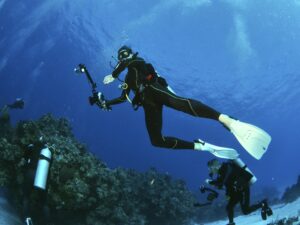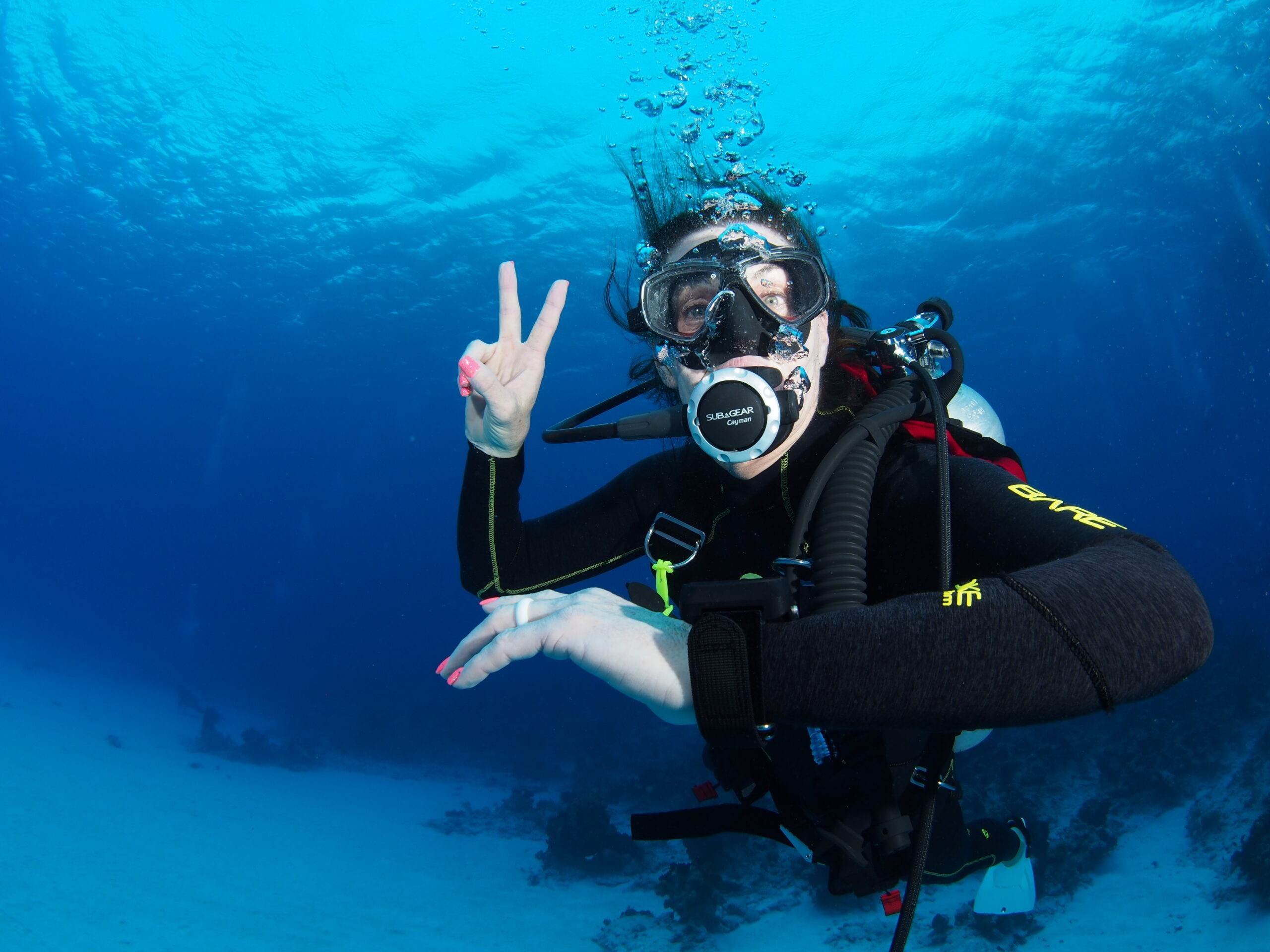Divers learn about “no decompression” limits, or NDL, during their Open Water scuba course. This is the amount of time a diver can remain at a given depth before the dive requires making “decompression stops” prior to surfacing.
The term, “no decompression” is a misnomer. All dives are decompression dives. In recreational diving, your slow ascent rate allows inert gas (nitrogen) to diffuse out of your tissues without forming bubbles (the cause of DCS, AKA “the bends”). While there are no required decompression “stops” during these dives, gas exchange still takes place, which is the definition of decompression. Therefore, some training agencies now use the term, “no stop” dives.
I absolutely agree that “no stop limit” is a more accurate term than “no decompression limit.” However, it can create confusion if you aren’t aware that they mean the same thing. Most computers, dive tables and log books use NDL.
Dive computers display your NDL
 Dive travel is a big part of my job, so I interact with a lot of divers. I am surprised at the number of divers that don’t really understand what their computer is telling them.
Dive travel is a big part of my job, so I interact with a lot of divers. I am surprised at the number of divers that don’t really understand what their computer is telling them.
Depth is usually the largest number on a dive computer display. Next is dive time. NDL, is often smaller still. I would argue that your elapsed dive time is orders of magnitude less important than your NDL. In fact, I could confidently make the case that your dive time does’t matter at all during recreational dives.
NDL is your remaining no stop time at your current depth. In some ways, NDL and tank pressure are the only numbers you need to conduct safe recreational dives. This assumes you have the training and experience to dive down to the recreational limit. I’m not advocating diving while unaware of your depth, but if you think about what really matters, it’s the time limit.
To belabor that point, imagine you’re at 100 feet dive depth. Is it more important to know that you are at 100 feet, or to know how much longer you can stay (NDL) at whatever your current depth is without inducing decompression stops? The last thing you want is to be surprised with mandatory decompression.
Watch your NDL and your tank pressure
One habit you should get into is checking your NDL every time you check your depth and/or tank pressure. Anytime you change depth, especially when descending, check your NDL. A depth change of 10 feet can make a huge impact on your remaining NDL. This is especially important later on during the dive.
Of course, your no decompression limit means little if you run out of air. This is a little off topic, but here’s a handy way to gauge how you are tracking with other divers.
Most group dives are about an hour. It is helpful to think of your dive as three, 20 minute segments. If you are diving with an aluminum scuba tank, it will be filled to 3,000 psi. This makes it easy to estimate whether you are ahead or behind on tank pressure at any point throughout your dive. Here’s how that looks:
- At 20 minutes, your tank pressure should be 2,000 psi or more.
- At 40 minutes, your tank pressure should be over 1,000 psi.
By the time you reach the 40 minute mark, you’ll likely be shallow and close to the boat. Divemasters and instructors typically plan dives so that air hogs can be on their safety stop by this point.
The great thing about dividing your dive into thirds is you can make adjustments early on. If it looks like you’ll be under 2,000 psi after 20 minutes, you can adjust by going shallower. If you are consistently in this position, conduct future dives by swimming above the group rather than in the middle.
Final thoughts about No Decompression Limits
As mentioned, “no decompression” dives are really just no stop dives. You will be off-gassing (decompressing), and your slow ascent rate is what prevents bubble formation. ASCEND SLOWLY, and make a safety stop.
Safety stops differ from decompression stops in that they are not mandatory. Divers often refer to safety stops as decompression stops, although they are not the same thing. If your computer calls for a decompression stop (often displayed as DECO), you MUST make that stop and not ascend above the indicated depth. You also must remain at that depth until your computer “clears.” At that point, you should also make a 3-5 minute safety stop prior to your final ascent.
Read your computer manual and make sure you understand what it is telling you. I’ve seen way too many divers blow through mandatory deco stops and have no idea why their dive computer locked them out for 24 hours. Worse, I’ve watched in horror as the very same divers borrow a computer for subsequent dives, or even dive without one! Missing a decompression stop is a HUGE deal. DO NOT DIVE for at least 24 hours if you miss a deco stop!
I hope I have cleared a few things up and provided a tip or two to make your diving safer. Feel free to comment or drop me a note if you have questions or something to add.



Great article. You might consider a summary that shows one liners for NDL, TTS, Decompression Stop and Safety Stop so new divers can more easily keep them straight rather than requiring them read 4 separate articles to see how they fit together.
Thanks Greg! I’ll try to make to up include your suggestions. Cheers!